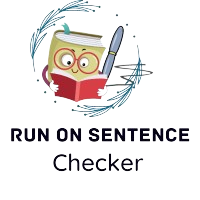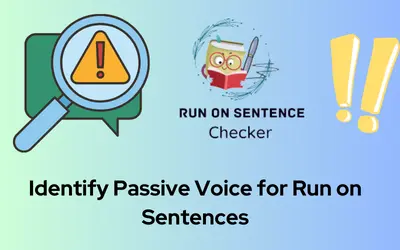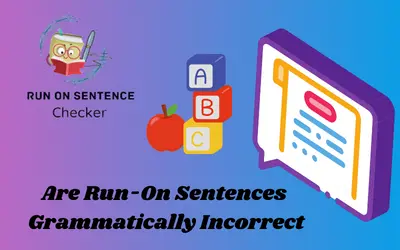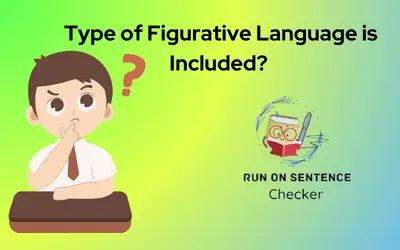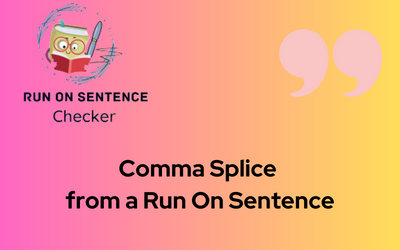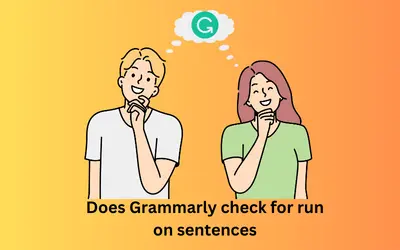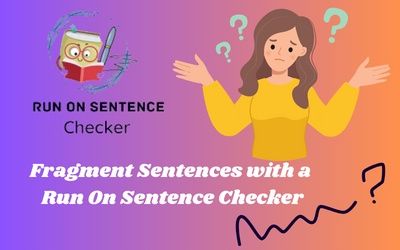The Run-on sentences are the curse of good writing, causing readers to be dazed and clueless. This guide approaches the best way of fix run on sentences, examining their varieties and reasons behind them before discussing how to accomplish this task for smooth writing. The source of the run-on sentence stems from punctuation errors and faulty structure. Comma splices, commas instead of coordinating conjunctions and fused sentences are some culprits. Only by understanding these problems can the necessary correction be made. You can use our runonchecker.io tools for run on sentence checker
What are Run on Sentences? Lets How to fix Run On sentences
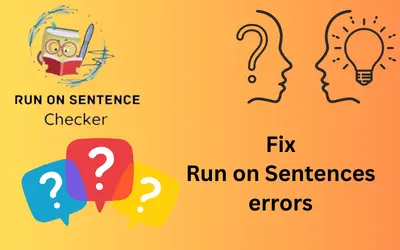
At its core, a run-on sentence occurs when two or more independent clauses are incorrectly joined, leading to confusion.
Writing is punctuated by an arsenal of many run-on sentences. These types of errors arise due to the unsatisfactory fusion between two separate independent clauses that creates confusion and unclear communications. It is therefore very necessary to pay attention to the way run-on sentences are corrected when a person strives for an effective implementation of ideas into words.
Consider the following example:
She loves hiking it helps her stay active.” Here, the absence of a proper punctuation mark or conjunction creates a run-on.
3 Best ways to Fix & Prevent Run On Sentences
Run-on sentences appear in many different ways. Independent clauses without any punctuation being joined together result in fused sentences. A comma splice, contrariwise, joins independent clauses with a simpleton- Incoordination is a lack of coordinating conjunctions within the compound sentences.
Utilizing Proper Punctuation
One effective way to fix run-on sentences is by employing proper punctuation. This involves using periods, commas, and other punctuation marks to clearly separate independent clauses. Consider the following bullet points for a more detailed understanding:
Periods: Ending one independent clause with a period and starting the next with a capital letter is the most straightforward method.
For example:
Incorrect: The sun was setting she hurried home.
Correct: The sun was setting. She hurried home.
Commas with Conjunctions: Another option is to use a comma along with a coordinating conjunction (and, but, or, nor, for, yet, so) to connect the two independent clauses.
For example:
Incorrect: The meeting is at noon you should be there.
Correct: The meeting is at noon, and you should be there.
Semicolons: Semicolons can be used to create a stronger connection between two independent clauses. This punctuation mark is particularly useful when the two clauses are closely related.
For example:
Incorrect: She studied all night she still didn’t feel prepared.
Correct: She studied all night; still, she didn’t feel prepared
By incorporating these punctuation strategies, you not only adhere to grammatical rules but also enhance the readability of your writing. Consider the context of your sentences and choose the method that best maintains the flow and coherence of your ideas.
Adding Conjunctions
Conjunctions, such as “and,” “but,” and “or,” can serve as bridges between independent clauses, ensuring a smoother flow of ideas and preventing run-on sentences. Consider the following discussion:
Coordinating Conjunctions: These conjunctions are effective tools for joining independent clauses while maintaining clarity. They help create a logical relationship between the ideas presented.
For instance:
Incorrect: The rain was heavy it didn’t stop us from going for a walk.
Correct: The rain was heavy, but it didn’t stop us from going for a walk.
Subordinating Conjunctions: In some cases, using subordinating conjunctions can also be beneficial. These conjunctions signal a dependent relationship between clauses, clarifying which idea holds more importance.
For example:
Incorrect: I missed the bus I arrived late for the meeting.
Correct: Because I missed the bus, I arrived late for the meeting.
Correlative Conjunctions: These conjunctions work in pairs to connect similar elements within sentences. They are useful for balancing ideas and avoiding run-on sentences.
For instance:
Incorrect: She wanted to visit the museum, she also wanted to go shopping.
Correct: She wanted to visit the museum, and she also wanted to go shopping.
By incorporating appropriate conjunctions, you not only address run-on sentences but also enhance the coherence and logical flow of your writing. Choose the conjunction that best fits the relationship between your independent clauses, ensuring a seamless transition for your readers.
Using Semicolons
Semicolons provide a more sophisticated solution. They allow for a closer connection between independent clauses than a period but still ensure proper separation. Let’s delve into the advantages and proper usage of semicolons:
Closer Connection: Semicolons are powerful in linking related independent clauses that share a thematic connection. This can create a sense of continuity between ideas.
For example:
Incorrect: The deadline is approaching, I haven’t started my project yet.
Correct: The deadline is approaching; I haven’t started my project yet.
Maintaining Independence: While semicolons connect ideas, they also emphasize the independence of each clause. This is particularly useful when you want to highlight the relationship between thoughts without merging them into a single sentence.
For instance:
Incorrect: She loves reading, she spends hours in the library.
Correct: She loves reading; she spends hours in the library.
Avoiding Comma Splices: Semicolons serve as an elegant alternative to comma splices, preventing the potential confusion that can arise when independent clauses are joined solely by a comma.
For example:
Incorrect: The concert was incredible, the audience couldn’t stop cheering.
Correct: The concert was incredible; the audience couldn’t stop cheering.
Common Causes of Run-on Sentences in Writing
The long, unwieldy sentences that trip people up–run-on sentences–have their roots in a number of problems. Here we will examine these factors more deeply, to make clearer the multiplicity of reasons behind run-on sentences. Every writer seeking to write legibly and vividly must comprehend these nuances.
Lack of Punctuation
The lack or inappropriate use of punctuation is one of the main causes for run-on sentences. Punctuation, including different commas, periods and semicolons is much used to define the shape of sentences. If they are missing, however, sentences get run together and the reader gets lost.
Example:
Incorrect: “She enjoyed the hike it was refreshing.”
Correct: “She enjoyed the hike. It was refreshing.”
Comma Splices and Fused Sentences
What are called comma splices and fused sentences? These arise from the treatment of two independent clauses with a comma or without any punctuation at all. Violating these will cause things to be unclear and break the rhythm.
Example:
Comma Splice: “The sun was setting, she decided to go for a walk.”
Fused Sentence: “The sun was setting she decided to go for a walk.”
Misuse of Coordinating Conjunctions
There are the coordinating conjunctions (and, but or, nor for), so important in linking similar ideas together. Yet their misuse is liable to lead to fix run on sentences. It is very important to know when and how these conjunctions are appropriate.
Example:
Incorrect: “I wanted to go for a run but it was raining.”
Correct: “I wanted to go for a run, but it was raining.”
Different ways of Fixing Run On Sentences
Writers shouldn’t experience of fix run on sentences for eternity. How do you keep them from getting out of hand? How can you correct these gaps in grammar and turn out a clever, articulate composition? There are many ways of writing and fixing run-on sentences and still checking run on sentences is correct or not. This part will focus on methods to correct run-on sentences, offering practical guidelines that writers can quickly memorize.
Proper Use of Punctuation
The simplest way to fix run on sentences is by using proper punctuation. Final punctuation should separate independent clauses and give the sentence a clear structure. Adding periods, commas or semicolons where appropriate will make your instructions doubly useful to students.
Example:
Original Run-On: “She loves hiking it helps her stay active.”
Corrected: “She loves hiking. It helps her stay active.”
Breaking Sentences into Smaller, Concise Ones
The breaking up of a long sentence into more manageable pieces is another good technique. This not only solves the run-on problem but also improves readability.
Example:
Original Run-On: “The concert was fantastic we danced until midnight then we went for a late-night snack.”
Corrected: “The concert was fantastic. We danced until midnight, and then we went for a late-night snack.”
Using Conjunctions Appropriately
Using conjunctions is one of the most important links in a sentence. With appropriate use of conjunctions such as and, but, or etc. related clauses are properly linked together into a coherent whole.
Example:
Original Run-On: “I wanted to travel she preferred to stay home.”
Corrected: “I wanted to travel, but she preferred to stay home.”
Crafting Separate Sentences
If ideas in a run-on sentence can stand alone as distinct thoughts, consider breaking them into separate sentences. This not only rectifies the run-on issue but also enhances the overall flow of the text.
Example:
Original Run-On: “The sun was setting she decided to go for a walk.”
Corrected: “The sun was setting. She decided to go for a walk.”
With these various approaches in mind, avoidable fix run on sentences & do not pose any great challenge for writers, who can craft pathways through language that are both grammatically correct and highly readable. Playing around with these tools gives writers greater authority over their sentences, and allows them to create text that is engaging as well as informative.
Conclusion
In conclusion, fixing run-on sentences is not just a matter of adhering to grammatical rules; it’s about enhancing your communication skills. By understanding the nuances and diligently applying corrections, you elevate your writing to a professional standard.
Is it possible to have a run-on sentence without multiple independent clauses?
No, run-on sentences, by definition, involve the incorrect joining of two or more independent clauses.
Can run-on sentences be fixed by simply adding a comma?
Not always. Proper correction may require adding a conjunction, using a semicolon, or creating separate sentences.
What impact do run-on sentences have on SEO?
Search engines prioritize clear, concise content, so run-on sentences can negatively affect SEO rankings.
Should I avoid long sentences altogether to prevent run-ons?
No, long sentences are acceptable when appropriately structured. The key is to vary sentence lengths for better readability.
How can I tell if my writing has improved in terms of run-on sentences?
Regular feedback from peers or using writing analysis tools can help gauge improvements in addressing run-on sentence errors.
